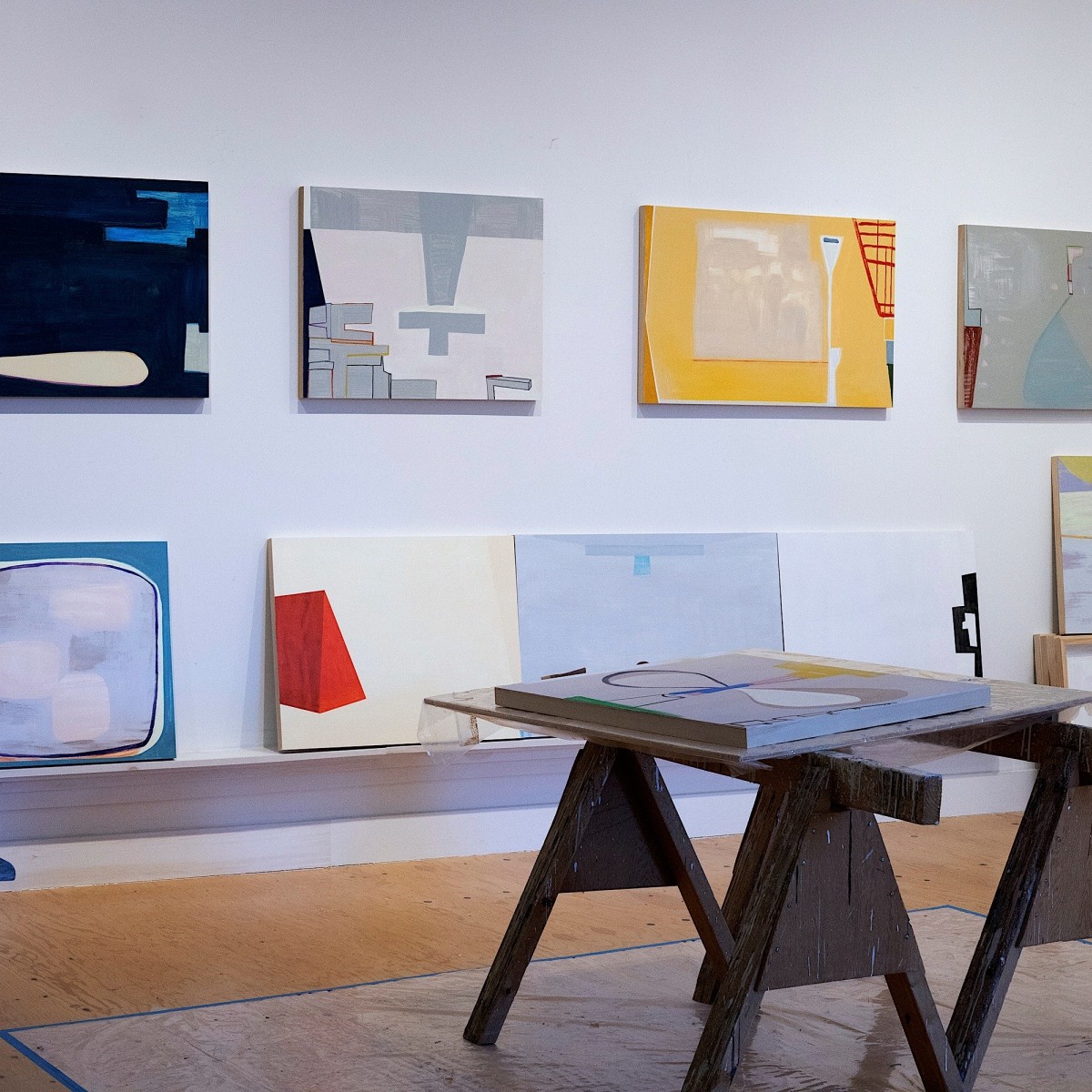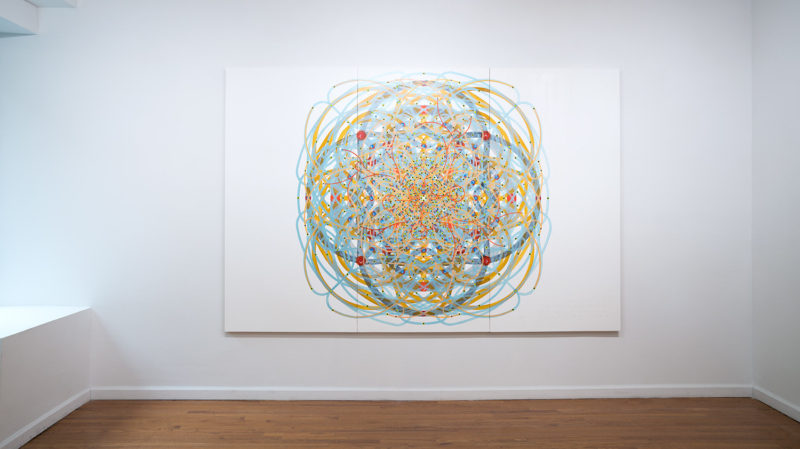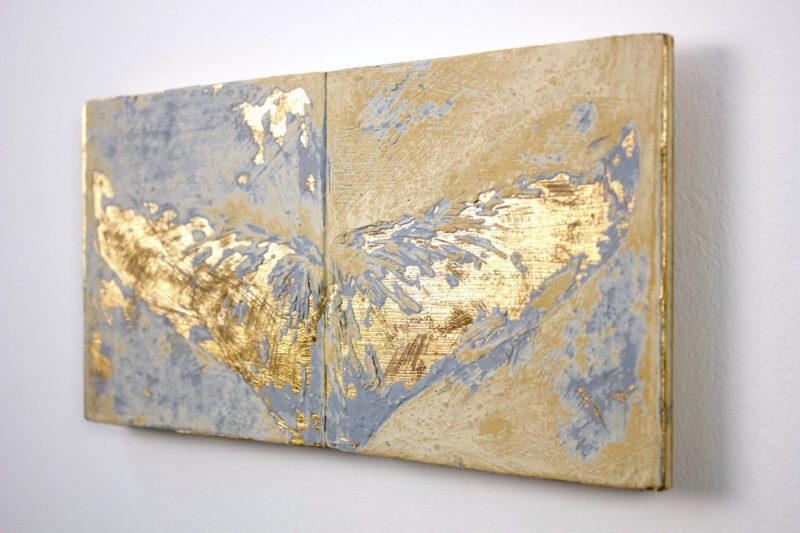Silas von Morisse Gallery specializes in contemporary art. Among its represented artists are Juliette Dumas, Owen Schuh, as well as the big names of the older generation such as Monika Weiss, Marjorie Welish, and Frances Barth. Fine Art Shippers spoke with the gallery founder and director, Silas von Morisse, about her journey from the film industry to art, the importance of working with living artists, and the advantages of displaying art online.
Silas von Morisse Gallery: Outside the Trends But in the Market
You started your professional career in the film industry before transitioning to the art world. Why did you decide to change the field?
Silas von Morisse: I was born into a family of architects and grew up in Monaco surrounded by the arts, visiting museums and galleries, and discussing all things creative in the family. Cinema was one of the arts I have always been attracted to, so it felt very natural for me to become a film producer. I studied at The School of the Museum of Fine Arts in Boston and then at New York University Tisch School of the Arts. The film industry is an extremely challenging field. I enjoyed it while working there, but after successfully creating and producing film festivals in France and Monaco for almost a decade, I decided to switch to the art world.
I worked for large and renowned blue chip galleries such as Helly Nahmad and Haunch of Venison (Christie’s), which allowed me to expand my knowledge and expertise. Although I became an expert in impressionist, modern, and post-war art, my true passion has always been contemporary art, as I love supporting and promoting living artists.
What are your preferred mediums or genres in contemporary art?
My favorite mediums are paintings and works on paper. I do have an appreciation for performance and installation art, which I acquired working with fantastic artists like Monika Weiss. Yet, paintings have always remained my top preference.
In 2014, you established Silas von Morisse Gallery. What inspired and motivated you to launch your own project?
After working for 15 years with large collections, I obtained a lot of knowledge about the art world. But I realized that many fantastic artists in New York were not represented by big galleries, as they only focused on established artists. So I started to look for young, talented artists who were not getting the recognition they deserved, for example, Juliette Dumas, Anthony Miler, Justin Williams, and others. Since then, these emerging artists have gained recognition and success. I also wanted to rediscover older artists from the 60s and 70s, such as Marjorie Welish or Frances Barth, and renew the audience’s interest in their work. Overall, the concept of the Silas von Morisse Gallery is to showcase exceptional artists, regardless of trends or the speculative market.
A few years ago, in 2020, the Silas von Morisse Gallery started to focus on nature-centered art. Why did you choose this approach? Was it your response to the environmental crisis?
In contemporary art, there is a tendency to focus on the negative environmental aspects, but I prefer to draw attention to the beauty of nature. Juliette Dumas is an excellent example of an artist who shares this philosophy. She follows the Rio Negro Manifesto, written in 1978 by the French art critic Pierre Restany along with two artists, Frans Krajcberg and Sepp Baendereck. The manifesto, drafted in Rio Negro, Brazil, called for a more "natural" approach to art. Its authors were against the excessively "realistic," "chaotic," and materialistic vision of contemporary art.
They believed that “naturalism” was a way of understanding the world through our connection to the planet. They called on artists to focus on people's destinies beyond just environmental issues. This way of thinking and seeing art profoundly resonates with me.
Your gallery only showcases artists online and does not host physical exhibitions. Why did you opt for this strategy?
We display our represented artists in alternative physical spaces that are photographed and showcased online. We have chosen this approach due to the high costs of maintaining a physical gallery in New York City, especially after the 2016 emerging market collapse and the Covid pandemic. The online format allows us to display artwork in unique, visually interesting locations, and we can work with shippers to deliver art directly to clients. Although physical galleries may attract more foot traffic during openings, the online format provides a cost-effective way to showcase art.
What is your shipping geography?
We collaborate with shippers both in New York City and around the world, be it Europe or Asia. I have a list of preferred companies in Paris and London. I previously worked as a registrar and I absolutely enjoy working with shippers.
What are your thoughts on the increasing prevalence of displaying and buying art online? Where do you think this trend will take us?
Online sales are becoming increasingly important for galleries as collectors' habits are changing, and more and more of them prefer to browse and purchase art from the comfort of their own homes. Moreover, there are more opportunities for artists to show their work online, either through galleries or online art platforms. While larger galleries may continue to maintain physical spaces, smaller galleries may struggle due to high costs. So smaller galleries, like mine, focus on curating and displaying artists digitally. Fortunately, technology offers many visually stunning options for this, and this trend is likely to continue.
What would be your one piece of advice to established and wannabe collectors?
I believe that collectors should focus on the artists they truly love, rather than following trends or what advisors tell them. It's important to support living artists because collecting is all about who you are, what you feel, and how your personality reveals through the art you collect. It’s not about having another Andy Warhol or Jasper Johns, but about finding art that is being created here and now and truly resonates with you.
Interview by Inna Logunova Photo courtesy of Silas von Morisse Gallery Images in the order of appearance: ©Frances Barth studio ©Owen Schuh ©Juliette Dumas


